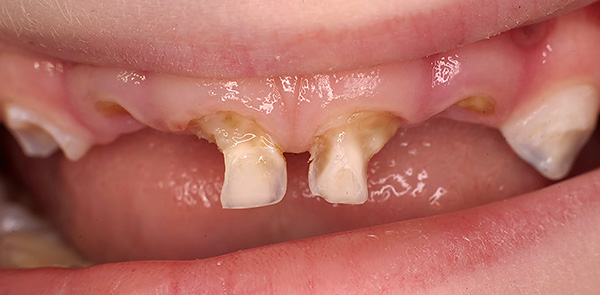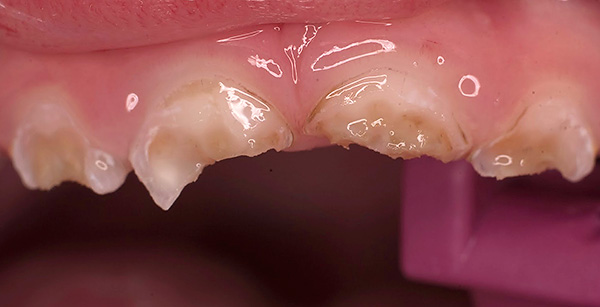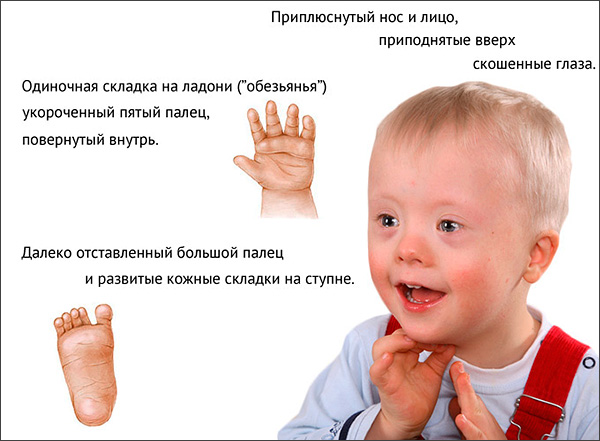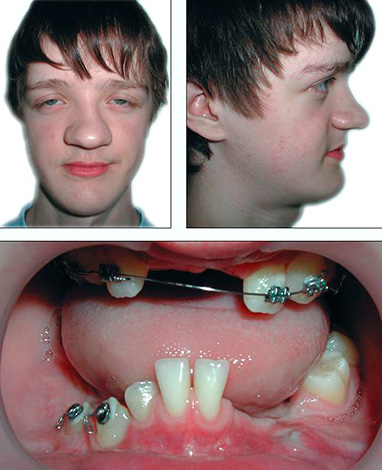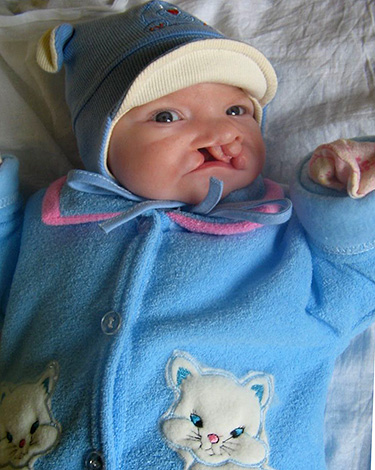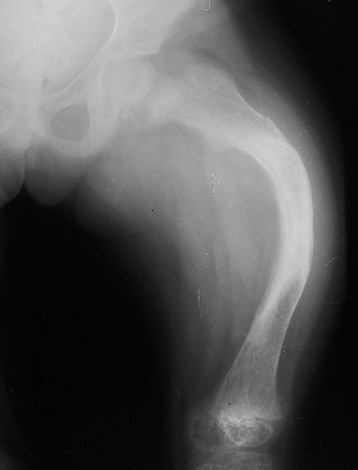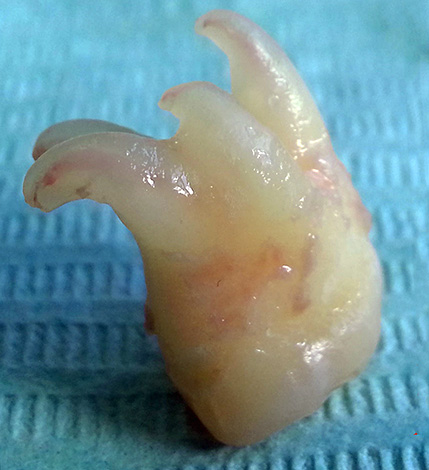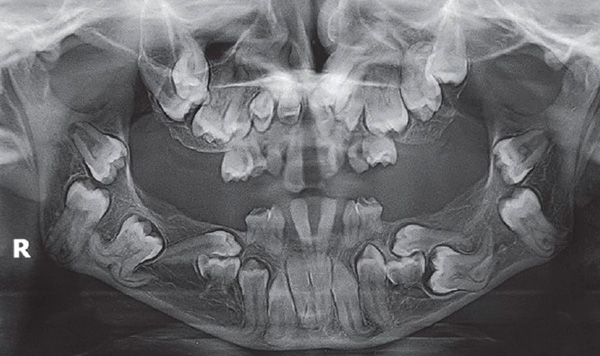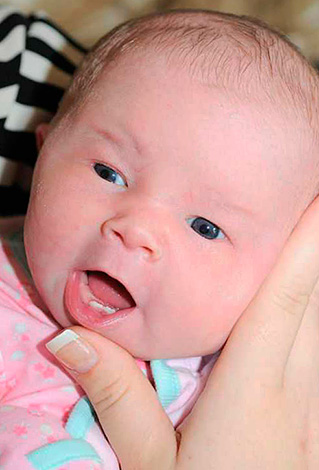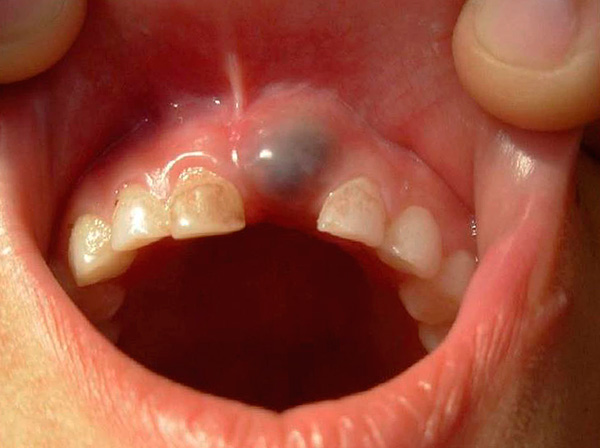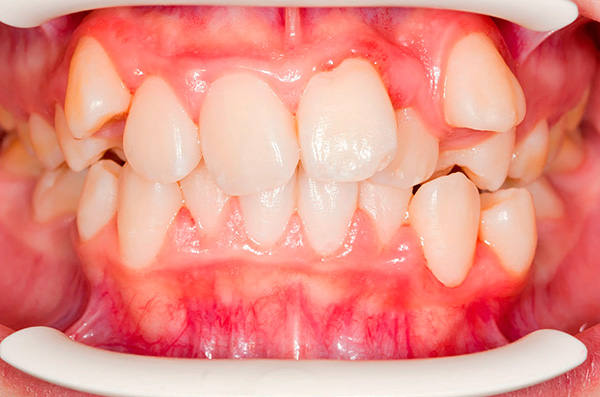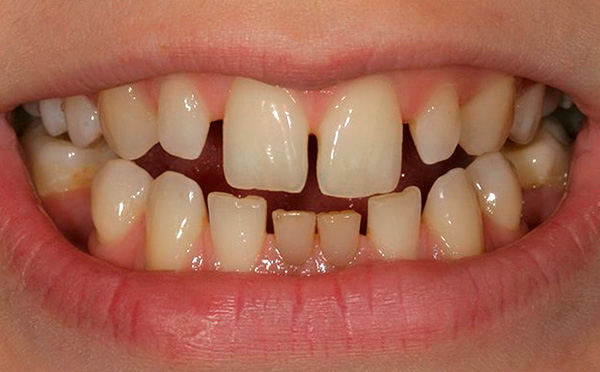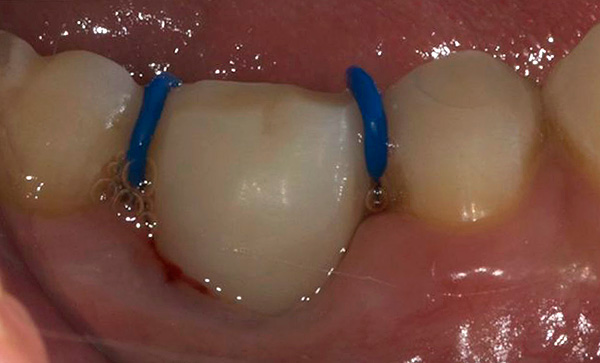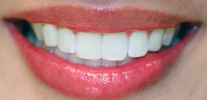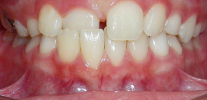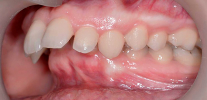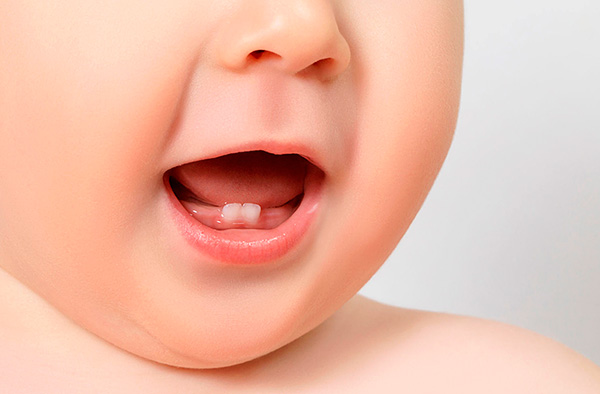
Teething of the first teeth in a child is a holiday for proud parents, but at the same time it also causes a number of worries, because even at the stage of formation of a milk bite, certain problems sometimes arise that require an early solution.
Therefore, let us examine in detail the most frequently asked questions by young parents related to the baby’s first teeth and care for them. And also see what is the norm, and in which cases you should contact the specialists.
Stages of the formation of milk and permanent bite
Orthodontists have decided to divide the stages of the formation of a child’s bite into several specific periods, and each of them has its own important features.
As you know, normally a child is born without teeth - instead of them, the newborn has only round gingival ridges. The structures of the temporomandibular joint are not yet developed, however, the child can actively suckle the mother’s chest, which in turn contributes to the growth and development of the jaws.
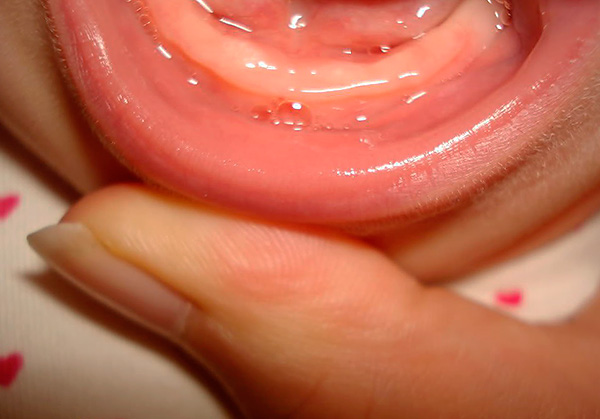
The first temporary teeth begin to erupt in the baby by 6-10 months. There is a certain sequence and timing of eruption of each tooth - the corresponding approximate values in months are presented in the picture below:
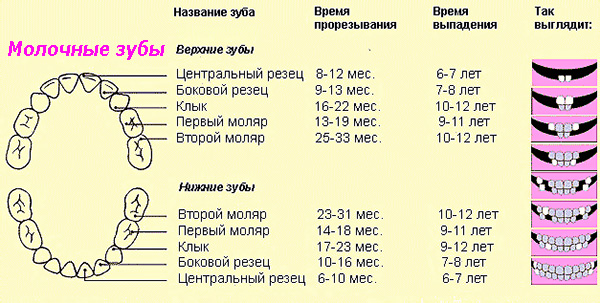
Generally speaking, deviations from the given terms of eruption for 2-3 months are considered to be within the normal range.
To understand that the baby will soon have the first milk tooth, usually by the following signs:
- In most cases, the child has increased salivation;
- If you take a closer look, you can often see gum bulges corresponding to the shape of the teeth in soft tissues. These thickenings can be palpated, that is, they feel good to the touch;
- The child during this period becomes restless and tearful more than usual;
- Everything that falls under the arm, the baby pulls into his mouth, thus massaging the gums and stimulating the eruption of milk teeth;
- Often (but not always) the child's temperature rises.
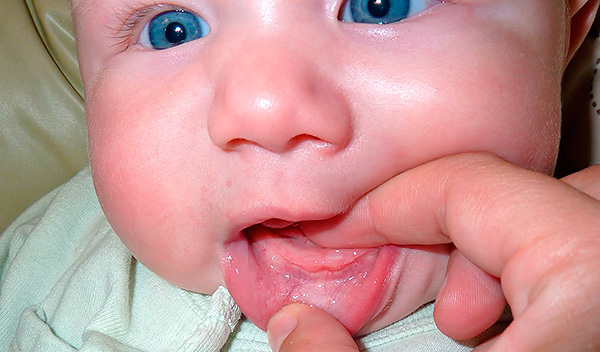
On a note
Before, dentists even used the term “tooth fever” to describe the symptoms of fever during teething in children, but today this term is outdated. Normally, the temperature in the baby can rise to 37.0-37.5 degrees. If the temperature rises above these values, and there are symptoms such as pain and redness of the throat, runny nose, cough, then most likely these are manifestations of childhood infections that coincided in time with the appearance of the first tooth.
What should parents do to help the baby in this difficult period for him? It is not necessary to bring down the temperature below 38 degrees medication, it is enough to regularly monitor the condition of the child, making sure that the temperature does not rise further. At this time, it is especially important not to overwhelm the child (as parents who are overly caring often like to do), and the baby needs to be given enough fluid to compensate for water loss due to increased body temperature and excessive salivation.
If the child’s temperature is 38 degrees or higher, they usually use antipyretic drugs in the form of suppositories and syrups (in this case, you should consult your pediatrician in advance to find the right medicine for the age and weight of the child).
The period of occlusion of milk teeth, starting, as already noted above, from about six months of age, continues until the eruption of any first permanent tooth. Dentists believe that the stage of temporary teeth lasts in children on average up to 3-3.5 years.
A common question of parents about what teeth are missing and how many total teeth are in the baby’s milk bite? So, there are a total of 20 teeth in a full milk bite, ten on each jaw. In the temporary bite there are no premolars, that is, 4 and 5 teeth - their place is occupied by milk molars.
Below in the photo you can see what a complete set of primary teeth on the lower jaw looks like:
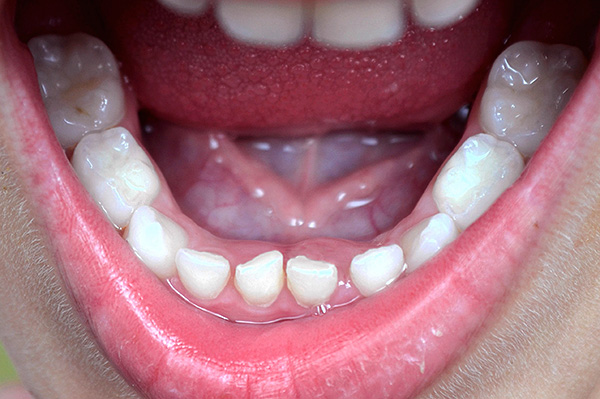
Normally, the child’s jaw bones have a semicircular shape, the teeth are spaced apart and are in close contact with each other, the upper dentition overlaps the lower. The back surfaces of temporary molars are located in the same plane with respect to each other.
On a note
The dental formula of a milk bite (and also permanent) is usually denoted by Roman numerals: I, II, III, IV, V, or Arabic 5, 6, 7, 8; for example, 51 teeth is the first central incisor of the upper jaw.
After the appearance of the first milk tooth in a child, the parents have a completely natural question - how to care for this first tooth and whether to care for it at all. Care must be taken: today the industry makes many options for silicone fingertips and toothpastes, appropriate for the age of the baby.
An example is shown in the photo below:
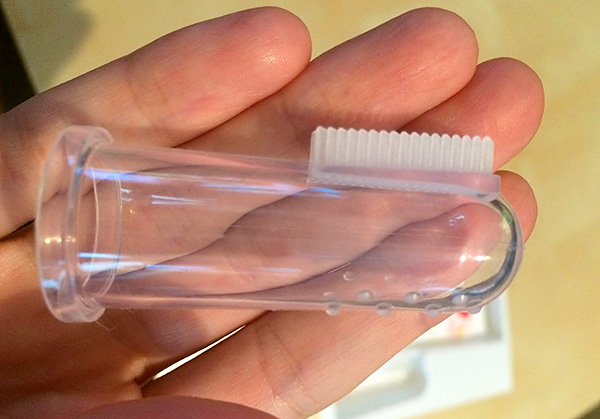
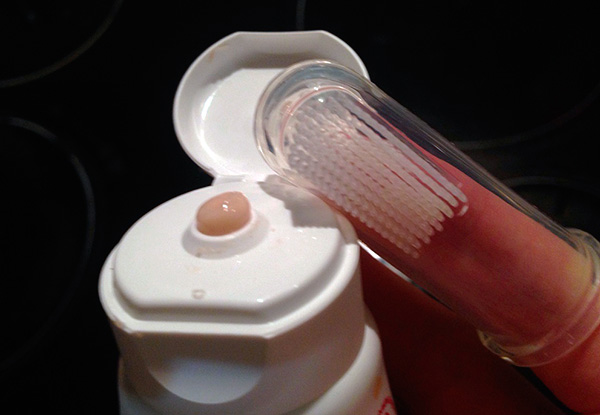
As practice shows, a fingertip made of silicone is not suitable for everyone and not immediately, because a child may not like the material itself and the appearance of this product. In this case, you can try to wrap a piece of gauze on your finger or buy a ready-made fabric version of the fingertip at the pharmacy and gently, in circular movements, clean the tooth (at first this can be done even without paste).
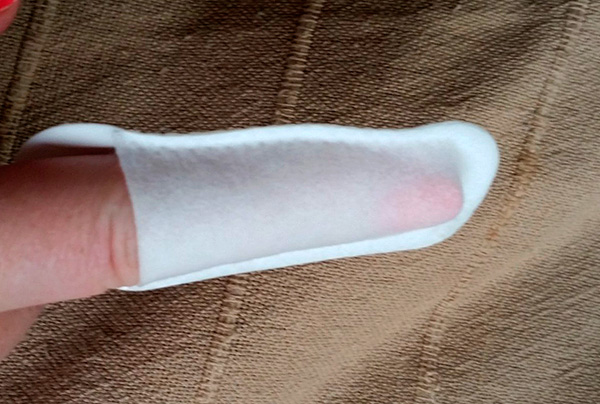
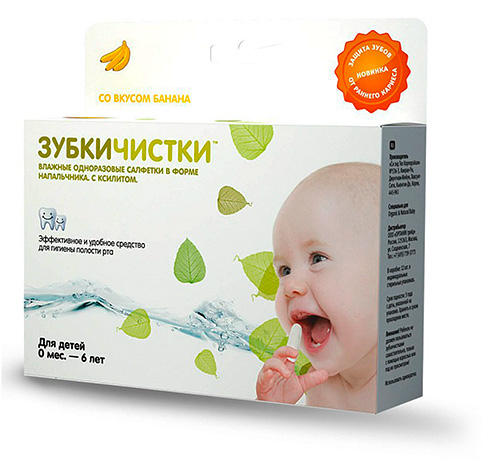
Gradually, when the baby gets used to the cleaning procedure, you can go to the silicone fingertip with toothpaste. Do not be afraid that children's toothpaste will harm the fragile tooth or the baby’s body as a whole - for very small abrasive and some chemically active substances that are part of many toothpastes for adults are specially excluded from the composition of the toothpaste. High-quality children's toothpastes are initially made taking into account the fact that babies, according to research results, can swallow up to 40% of the toothpaste while brushing their teeth.
On a note
Sometimes there is an absolutely misconception of parents that since milk teeth are temporary, then you do not need to take care of them. They say that they will fall out anyway, and then it will be already possible to do more thorough hygiene. With this approach, the condition of baby teeth in a baby can be truly catastrophic:
It is important to understand that problems in the milk bite will inevitably have a detrimental effect on the permanent bite, and sometimes (even with severe inflammatory processes) even the rudiments of future permanent teeth can be damaged.
Anomalies of teething and change of primary teeth
We will analyze the situation when time goes on, and the teeth, which, it would seem, should have appeared a long time ago, do not want to erupt.
There may be several reasons for this - both of a general nature, when a malfunction in the body leads to a delay in the normal processes of the child’s development, and local - in this case, the delay can be caused by trauma or other specific effects, leading to the non-cutting of individual milk teeth.
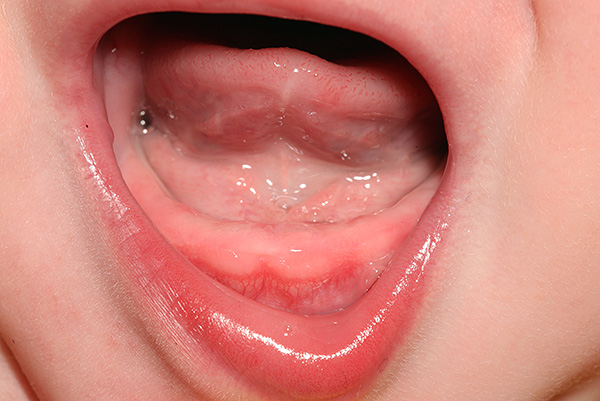
On a note
An important role among the causes of a general nature is played by heredity: if in the family of one of the parents a prolonged absence of certain teeth in childhood is characteristic, then there is a high probability that this feature can be transmitted through generations to a child.
Among the causes of a systemic nature, we can distinguish such diseases as:
- Down syndrome is a specific genetic mutation of chromosomes, as a result of which an additional 47 chromosome is formed in the cell set.Down syndrome is manifested by the presence of certain signs in the child, such as the atypical shape of the skull, flattened face and lag of the baby in mental and physical development. The normal timing of the development of a milk bite is also violated;

- Clavicular-cranial dysostosis (clavicular-cranial dysplasia) is a rather rare genetic disease characterized by underdevelopment of the clavicles and bones of the skull, which is manifested by prolonged closure of the fontanel in an infant, an altered skull shape and, in particular, a lag in the development of the maxillofacial region as a whole;

- Congenital cleft lip and palate - a congenital defect in which during intrauterine development the oral cavity and nasal cavity are not completely separated from each other, as a result of which there is an unclosed anastomosis between them. This interferes with the normal feeding, growth and development of the child, the dentofacial system cannot be formed properly - all this requires the intervention of an orthodontist together with the maxillofacial surgeon for the necessary correction;

- Rickets - the development of this condition is determined by metabolic disorders due to a lack of vitamin D. The disease is manifested by bone deformations of the entire skeleton, brittleness and fragility of bones. In children with rickets, there are certain changes in the shape of the jaw bones, as well as serious deviations from the normal development of the milk bite.

As for the local causes that can lead to anomalies in the eruption and change of milk teeth, the following can be distinguished:
- Congenital adentia (due to the lack of rudiments of individual teeth) - this feature can be hereditary, or cause intrauterine trauma to the fetus, or some effect on the mother's body during pregnancy. The laying of dental primordia begins at 6-7 weeks of fetal development, and the formation of the maxillofacial region and skeleton begins with 1-2 months of pregnancy. Accordingly, any serious adverse effect on the body of a pregnant woman during this period (taking certain medications, especially antibiotics, previous infectious diseases, excessive alcohol intake, smoking) can cause irreparable harm to the future condition of the child’s teeth and skeleton;
- Dilaceration - this term refers to the abnormal structure of the tooth root, in which the root begins to grow at an angle with respect to the crown. Most often, this condition develops after an injury to an already erupted tooth, or its embryo. In most cases, teeth with dilaceration should be removed;

- Abnormal position of the tooth germ. Sometimes the reason for the pathologies of the milk bite and the so-called “crooked teeth” lies in the fact that the tooth germ was initially formed out of place. This can occur at the stage of intrauterine development, and may also result from trauma during obstetric care and the application of forceps on the baby's head. In addition, tumor and tumor-like formations of the jaw can displace the rudiments of the teeth. This deviation can be suspected by a specialist during examination and palpation of the dentition of the child, or, more likely, this pathology can be installed on an x-ray;

- Primary violation of teething - this pathology is characterized by the absence of the process of teething, as such, in teeth that have not fused with the underlying bone. That is, a milk (or permanent) tooth located in the bone cannot overcome the obstacle in the form of bone tissue, because the necessary gum softening mechanism for this does not occur. Such an anomaly can be, for example, a consequence of improper filling of primary teeth, after which the root of the temporary tooth does not absorb, being an obstacle to the eruption of a permanent tooth.
In addition, with some caution, doctors relate to such anomalies as:
- The birth of a child with natal teeth - that is, a child is born already with individual teeth in the oral cavity. As a rule, these are the lower incisors. Such cases require careful observation - usually natal teeth quickly become stable and do not pose a threat to the further normal development of the milk bite. If the tooth staggers (may fall out and get into the respiratory tract) or significantly interferes with feeding (scratches the mother’s nipple), then it should be removed;

- A teething cyst (a cavity filled with fluid) - when a teething tooth is sometimes peeling off the underlying layer of the gum, a space is formed that is filled with blood, lymph or, in severe cases, decay products, i.e. pus. The decision about whether or not to go to the doctor in this situation is made depending on the general condition of the child. Basically, a cyst passes without consequences, but sometimes requires the intervention of a specialist;

- Dystopia - teething is out of place. Dystopia may be due to a lack of space in the dentition, or is formed due to improper laying of the tooth buds, or due to a genetic predisposition;

- Macro and microdentia is an anomaly in the size of teeth when they are either too small or too large, thereby causing a mismatch in the size of the jaw bones and dentitions. As a rule, it is hereditary.

If the teething times for individual teeth have already come, you can use some kind of teething stimulants. So, for example, in pharmacies and children's stores various toys from dense rubber or silicone are sold, playing with which the baby makes gum massage and stimulates teething.
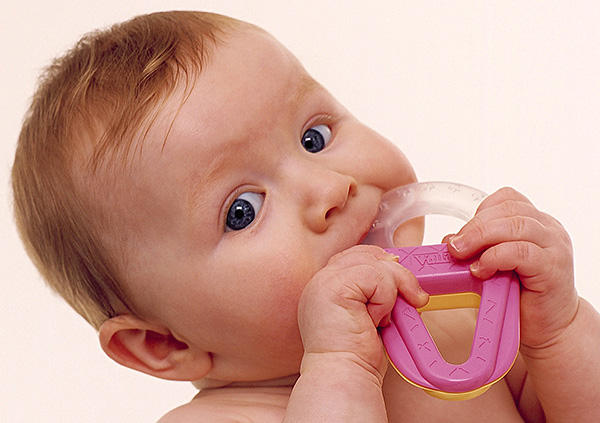
On a note
To facilitate the eruption of milk teeth, orthodontists use special separation rings, which are installed in the gap between existing teeth. Thus, the pressure exerted on the tooth causes it to completely erupt. This method can be used when the crown is halfway out of the bone.
If there is a suspicion of a delay, or pathology of teething of temporary teeth, you should contact your pediatric dentist, or directly to the orthodontist.
To clarify the reasons, the doctor can send the child to an x-ray (the study is done strictly according to the indications, so as not to harm the children's body with excessive radiation). Orthodontists, as a rule, send children for an X-ray for the first time at the age of 4-5 to see how the dentition is formed and what actions can be taken now.
The doctor, first of all, is interested in whether there are all the rudiments of milk and permanent teeth, whether they are located in their anatomical places, what obstacles in the way of the tooth prevent him from leaving the bone. Along with this, attention is drawn to the structure of the maxillary sinus, mandibular canal and other important structures of the maxillofacial region.
Premature loss of deciduous teeth and what problems this may cause in the future
According to many parents, the loss of milk teeth is not a problem, because all the same then they will be replaced by permanent ones. In fact, the premature loss of even one milk tooth can have serious consequences and cause the child to have an abnormal bite.
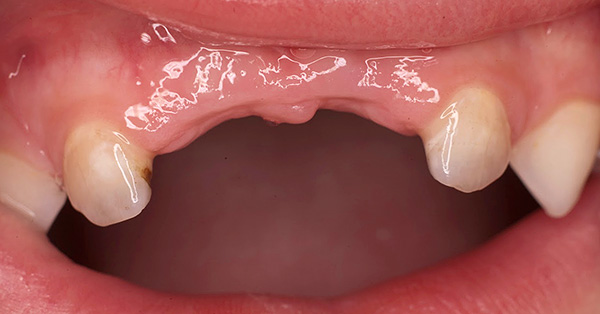
It is interesting
As they say, nature does not tolerate emptiness, and according to this law, teeth often shift towards the formed free space: for example, permanent upper teeth when moving milk can move out of the bone not strictly down, but a little to the side, trying to fill the existing void.
Now let's look in detail at what the premature loss of individual deciduous teeth can threaten.
Milk incisors: the loss of incisors can cause the fangs to shift towards the defect, as well as the rotation and inclination of the remaining teeth.
Milky Fangs: Generally speaking, fangs are very important teeth. Firstly, they carry an important functional load, they have a massive root and a crown with a pointed end, fangs are designed to tear off pieces of food. Secondly, in addition to the important functional role, fangs are important from the point of view of aesthetics, because they are in the smile zone.

From the point of view of orthodontics, the loss of milk canine is a rather serious problem, as it always leads to the displacement of the incisors relative to the midline of the face.
On a note
The midline of the face, or cosmetic center, is a conditionally drawn line that divides a person's face into two halves. Ideally, it should pass between two central incisors.
The shift of the cosmetic center can be associated with pathological contacts between the teeth, their overload, as well as premature abrasion.
First milk molars (chewing teeth): the loss of a temporary molar on one side of the dentition can cause a shift in the cosmetic center of the face. To prevent this complication, some orthodontists offer the so-called balancing removal, that is, the removal of the tooth of the same name on the other side of the dentition (but, by the way, many parents refuse to remove a healthy tooth from the child).
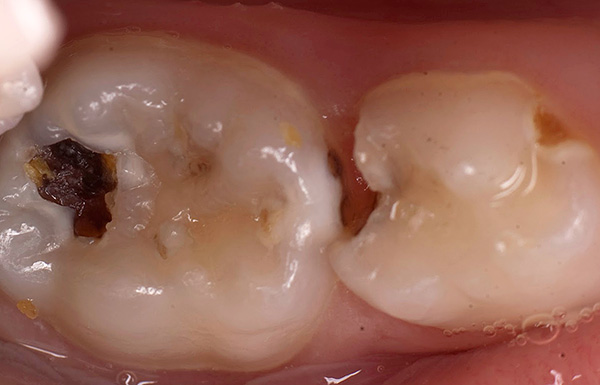
Children with the loss of the first milk molar should be under the supervision of a doctor, and if the mixing of the midline of the face still occurred, it is better to settle the first molar on the other hand.
Dairy second molars: when a second milk molar is removed, there is a chance that the permanent tooth will shift forward during teething, thereby forming a pathological bite.
If, however, the removal of any milk tooth for one reason or another could not be avoided, then it is better to immediately contact an orthodontist and assess the need for additional treatment. The task of the doctor in this case will be to maintain a place in the dentition for the normal eruption of permanent teeth. To this end, for the formation of a normal bite, various removable and non-removable devices are used, which allow new teeth to take their rightful place.
Retained milk teeth
If the schedule for changing temporary teeth to permanent deviates for six months or more, then this, as a rule, is a sign of some hidden reason that impedes the natural process of changing milk teeth. In this case, it is recommended to consult a doctor and conduct an x-ray examination to make sure that there are rudiments of permanent teeth.
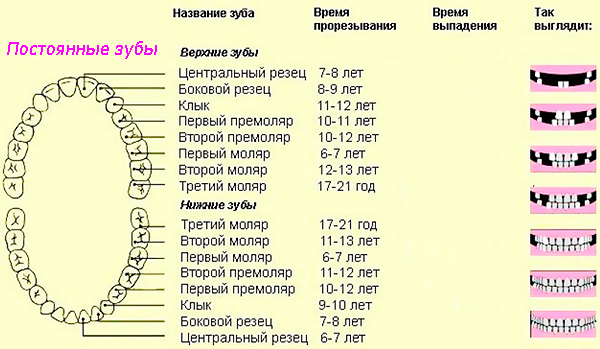
If there are rudiments, then the question arises of the removal of the milk predecessor, which prevents the exit of a permanent tooth.
In some cases, the removal must be done as quickly as possible, for example:
- Milk molars immersed in the gums are a phenomenon when a tooth does not reach the tooth on the opposite jaw, remaining imprisoned in the gum. Basically, such molars are first in the milk bite with all their teeth, and then gradually sink into the gums. If the molar is below the gum level at the end of the formation of the root of the permanent tooth, then such a molar should be removed (since otherwise it will not allow the permanent tooth to erupt normally). In other cases, doctors leave such molars under observation;
- The impact of permanent molars is a phenomenon in which a permanent molar cannot erupt, as it is blocked by adjacent temporary or permanent teeth. You can try to help the tooth cut through using the rubber separation rings mentioned earlier, or using a metal ligature, which the doctor places in the gingival space between the teeth.The pressure exerted in this way contributes to the exit of the tooth from the gums (in this case, to create the necessary space, one of the teeth blocking the causative one must be removed);

- Super-complete teeth - in most cases they cause occlusion problems (crowding, diastema, that is, the gap between the central incisors, as well as the inclination and rotation of the teeth in the dental arch). Oversized teeth can sometimes be detected accidentally after an X-ray. When teething, supernumerary teeth often have an abnormal shape and are almost always subject to removal.
The photo below shows an example of the presence of a jaw tooth in the jaw:
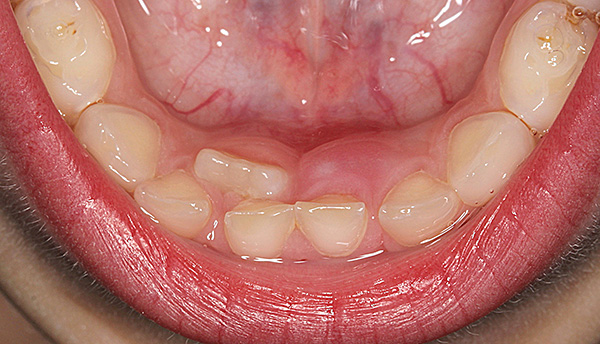
On a note
There are also so-called additional teeth - in their form they resemble the teeth of a certain group and, as a rule, are at the end of the corresponding group.
If there are no rudiments of permanent teeth, then milk teeth must be kept in place. In this case, after the preparatory stage of wearing the bracket of the system and creating a place, the patient is replaced with the existing anomaly by a dental implant.
Principles of treatment in milk bite
Already at the stage of formation of a milk bite, it may become obvious that it needs to be corrected, because otherwise it can lead to the incorrect development of the entire dentition, not to mention the obvious aesthetic disadvantages.
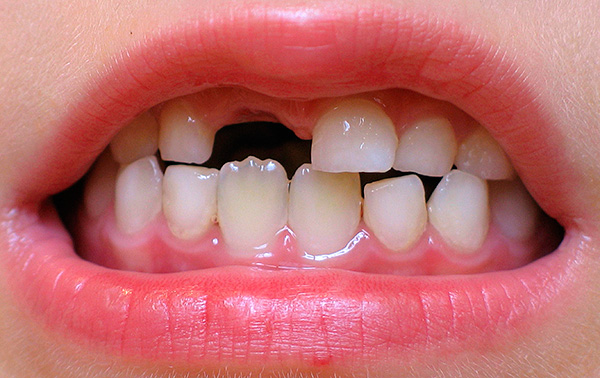
In particular, it is necessary to correct a milk bite in the following cases:
- with severe crowding of the teeth (when they do not have enough space in the jaw, they begin to grow "at random");
- with a delay or lack of teething of individual teeth;
- in situations when you see that the child’s teeth just grow crooked;
- after the forced removal of milk molars, or other temporary teeth due to caries and its complications;
…And etc.
In all these cases, you need to see a doctor, he will assess the state of the bite and, if necessary, send the child to the picture, and then decide whether to intervene at this stage, or whether it would be better to take the child under observation so as not to miss right time to start treatment.
For very young children, an orthodontist can offer wearing orthodontic transparent cap (trainers) - to preserve the available space in the dentition after the loss of a tooth or teeth.
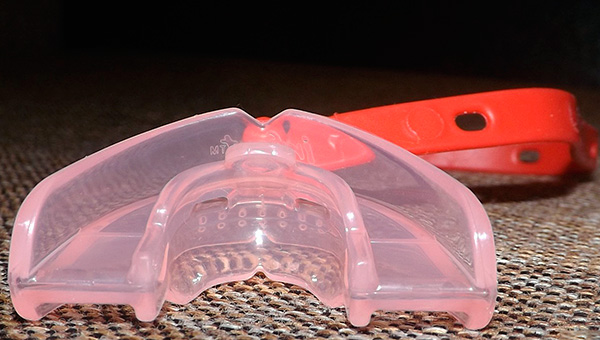
Then the tray is replaced by a plate apparatus with an expansion screw and artificial teeth that replace a row defect. An example is shown in the photo below:
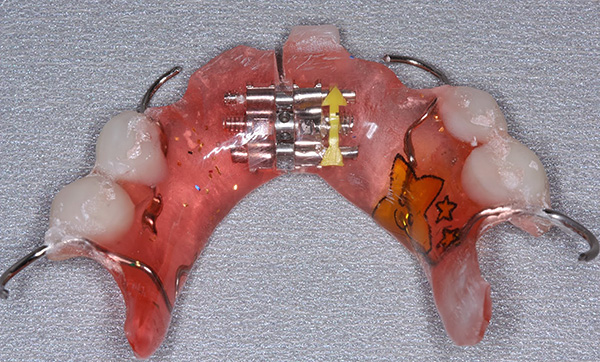
On a note
To improve the fixation of devices on small incompletely erupted teeth or in a toothless mouth, orthodontists recommend using special means - gels, creams. They are applied pointwise to the part of the apparatus adjacent to the sky, after which they are pressed against the sky, then they wait about 30 seconds.
Some parents come with complaints that the devices do not help correct the milk bite. And when questioned, it turns out that the child refused to wear the plate or mouth guard, cries, and parents, at best, put the device on the child for an hour or only a few tens of minutes a day. Meanwhile, the more you use the device, the faster the child will get used to it, and in the future will even feel more comfortable wearing a record in his mouth than without it.
At a more adult age (3.4, 5 years), you can teach your child in a game form a special set of exercises that help correct the bite - the so-called myogymnastics.
For example, to normalize the work of the circular muscle of the mouth with an emerging open bite, you can perform the following exercises:
- Pull lips, collecting them with a tube, and as if to blow out a candle;
- Inflate your cheeks, and then pressing on them with your hands and stretching out your lips, blow them out.
The doctor selects a set of exercises individually for each patient, taking into account a specific malocclusion.
Sometimes in a milk bite it is necessary to use fixed equipment, that is, fixing the bracket of the system, or various wire-frame arc devices on rings that are made individually.
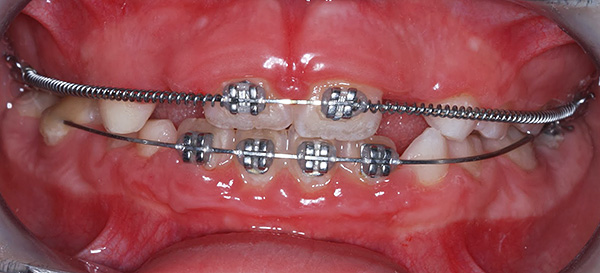
The use of non-removable devices is necessary, for example, with congenital malformations, in the case of rotations and tilts of teeth that cannot be fixed with removable devices. And also for the correction of removable bite, when the child wears removable devices irregularly, or refuses to use the plates at all.
In conclusion, it is perhaps worth noting this moment. Since orthodontic treatment is quite expensive today, many parents prefer not to do anything, hoping that the problem with the teeth of the growing child will resolve itself. So - a similar decision by parents can cause serious problems for a child in more adult age, starting from problems with chewing and speech, and ending with reduced self-esteem, isolation and depression (when a child walks with crooked teeth for years and is embarrassed to even smile - this leaves its mark sometimes for the rest of my life).

At the same time, even very serious occlusion problems can be quickly and qualitatively corrected in a milk bite, but only if the parents (and the child himself) are seriously interested and attuned to the treatment. And it is better to pay due attention to this issue at the initial stage, during the bite of temporary teeth, so that in the future the child does not have unnecessary problems in this regard.
Health to you and your children!
Interesting video: how to prepare a child for a dentist
About the timing of teething in babies

